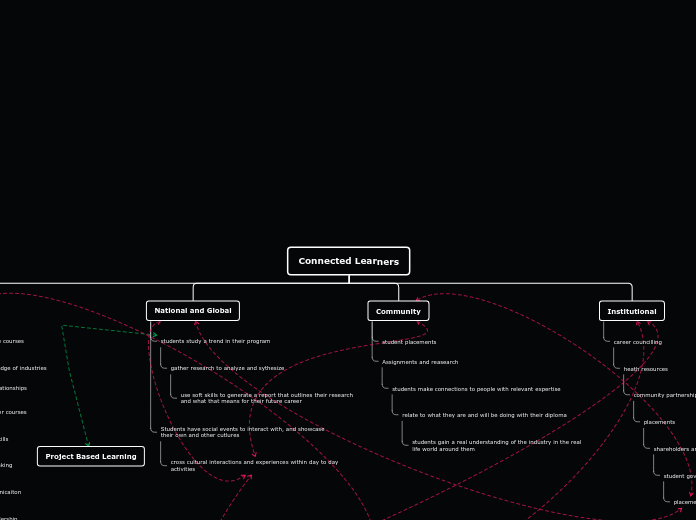Connected Learners
Program
Professors for core courses
current knowledge of industries
community relationships
Professors for other courses
Transferable skills
Critical thinking
communicaiton
leadership
teamwork
All relate and translate to the working/community industries and core courses
National and Global
students study a trend in their program
gather research to analyze and sythesize
use soft skills to generate a report that outlines their research and what that means for their future career
Students have social events to interact with, and showcase their own and other cutlures
cross cultural interactions and experiences within day to day activities
Community
student placements
Assignments and reasearch
students make connections to people with relevant expertise
relate to what they are and will be doing with their diploma
students gain a real understanding of the industry in the real life world around them
Institutional
career councilling
heath resources
community partnerships
placements
shareholders and board of governers
student governing bodies
placements
